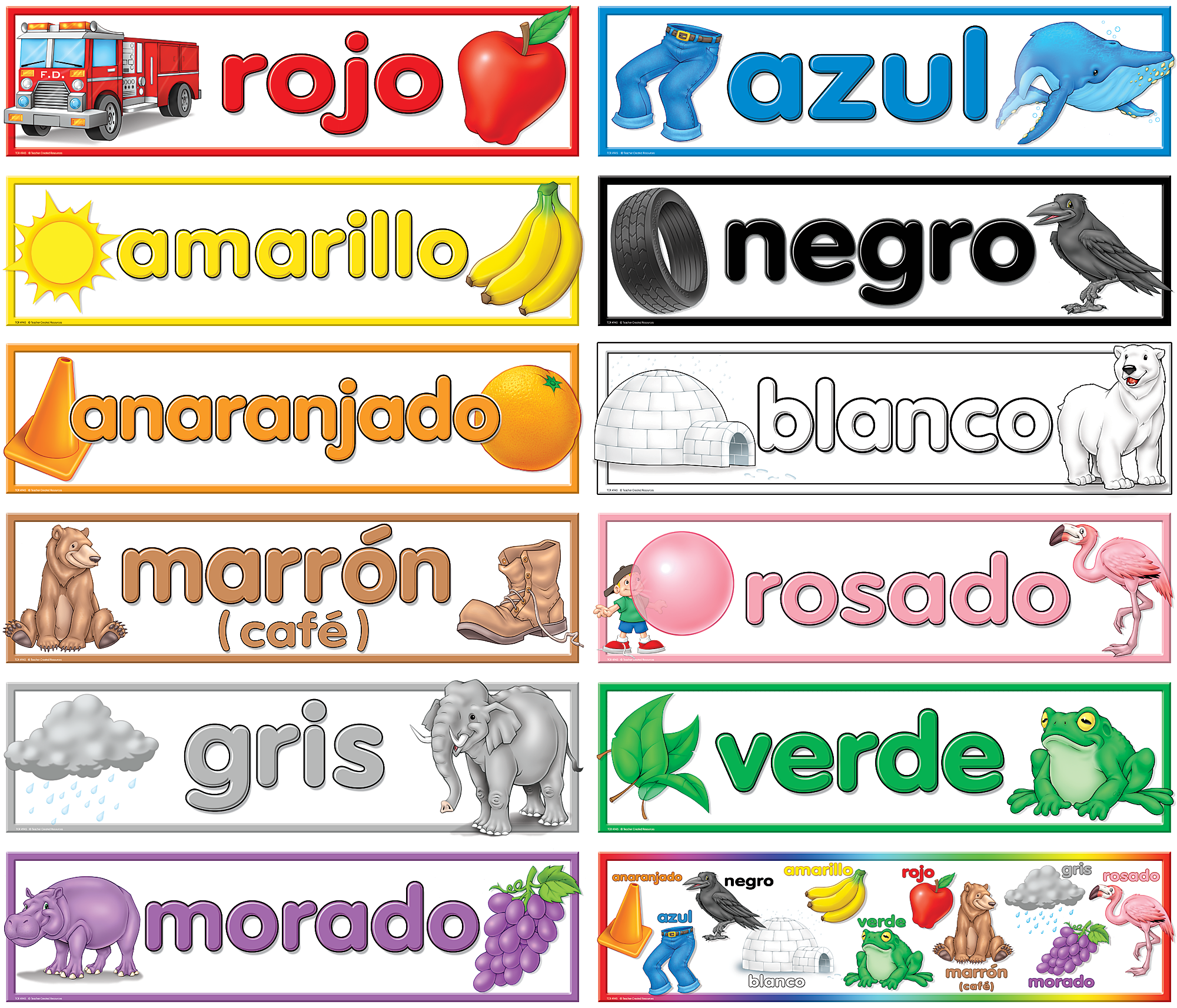

For instance, to say “A red house” in Spanish, we would need the feminine noun CASA for house and the word “Rojo” for its color so we can make the phrase “Una casa roja”.

The plural and feminine form of Spanish colorsįirst of all, Spanish colors must agree in gender with the noun they modify. This means that we need to follow some grammar rules to use colors correctly in sentences. Spanish colors are actually a special type of adjectives, that is words used to describe objects. Watch the video a few times till you feel confident with the Spanish colors, and you will be the master of colors in no time.Los colores en español Making sentences with Spanish colors and the verb SER You will learn a few colors: black, blue, brown, green, orange, purple, red, white, yellow, gray, gold, and silver in the video. La c asa amarilla es bonita – “The yellow house is pretty.” Master the colors in Spanish!Ĭolor words are great to express yourself in Spanish. I’m sure by now you have noticed that in Spanish, unlike in English, adjectives, including color words, are used after the nouns they modify and not before them.Įl carro amarillo es bonito – “The yellow car is pretty. Las is feminine plural.Įl carro amarillo - “The yellow car” (the word carro is masculine – the article and the adjective must match the gender of the noun) La c asa amarilla - “The yellow house” (the word casa is feminine – the article and the adjective must match the gender of the noun) El is masculine singular, Los is masculine plural, la is feminine singular. The definite articles in Spanish address two things the gender and if a word is singular or plural. Which one you choose depends on the noun which follows. In English, there is only one definite article, “the.” In Spanish, you must choose between four definite articles: el, la, los, and las. If the noun is masculine (ending with the letter o or e) or feminine (ending with the letter a), you must change the last letter of the color name to compliment the noun.Ĭarro amarillo - “yellow car” (the word carro is masculine) C asa amarilla - “yellow house” (the word casa is feminine) All it takes is changing the last letter of the color. The colors gender changes to agree with the noun it describes. A noun is a word used to denote a person, place, thing, or idea. In the Spanish language, nouns are masculine or feminine. The article and the adjective must match the noun

The gender of the word, what article to use, is the word singular or plural, the order of the words. There are some simple rules to remember when using color in Spanish. While in English, “light gray,” in Spanish, “ gris claro.” Simple grammar rules when using colors in Spanish Note that words that help identify shades of color are written opposite that in English. For example, amarillo fuerte (“bright yellow”). Fuerte – To describe a color as bright, you should pair up the color with fuerte.Intenso – Paring intenso with a color describes the color to be deep.For example, Rojo intenso(deep red).For example, Azúl eléctrico (“electric blue”)



 0 kommentar(er)
0 kommentar(er)
